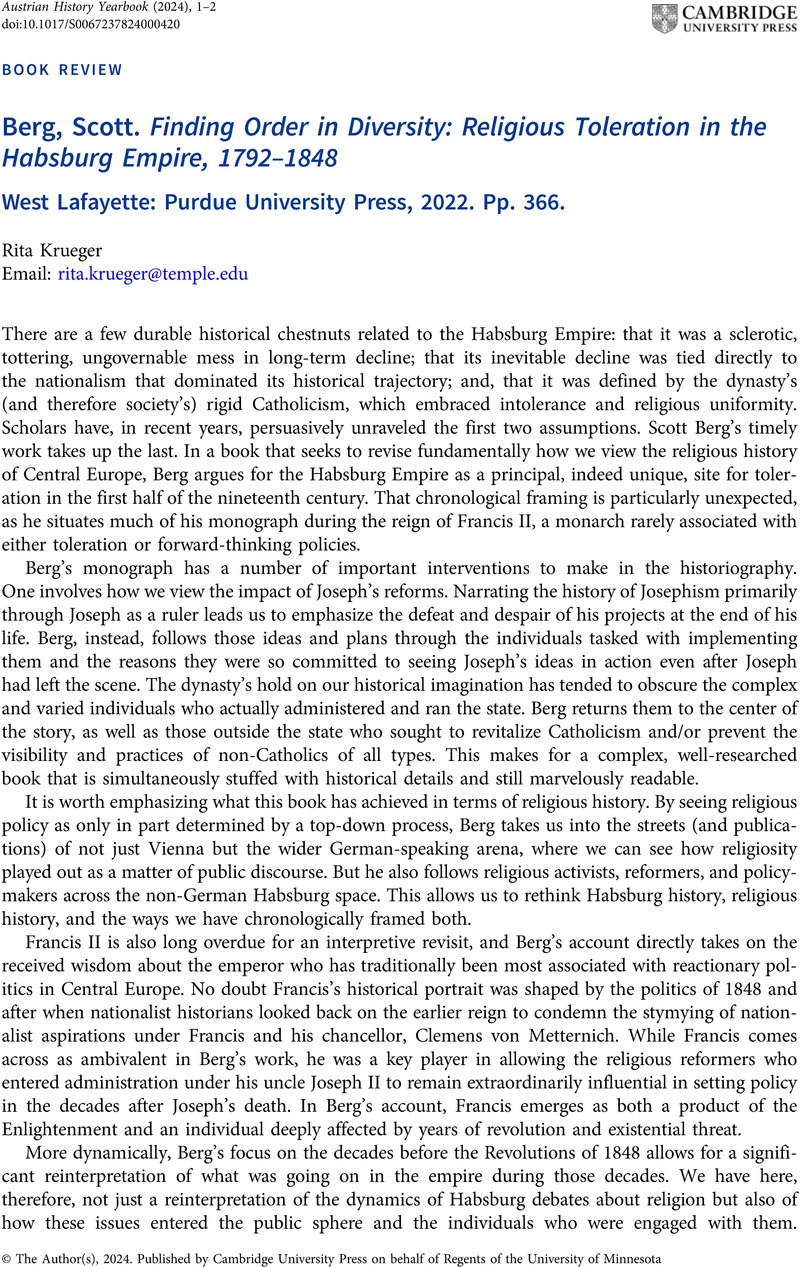No CrossRef data available.
Article contents
Scott Berg. Finding Order in Diversity: Religious Toleration in the Habsburg Empire, 1792–1848 West Lafayette: Purdue University Press, 2022. Pp. 366.
Review products
Scott Berg. Finding Order in Diversity: Religious Toleration in the Habsburg Empire, 1792–1848 West Lafayette: Purdue University Press, 2022. Pp. 366.
Published online by Cambridge University Press: 08 April 2024
Abstract
An abstract is not available for this content so a preview has been provided. Please use the Get access link above for information on how to access this content.

Information
- Type
- Book Review: To 1848
- Information
- Copyright
- Copyright © The Author(s), 2024. Published by Cambridge University Press on behalf of Regents of the University of Minnesota


